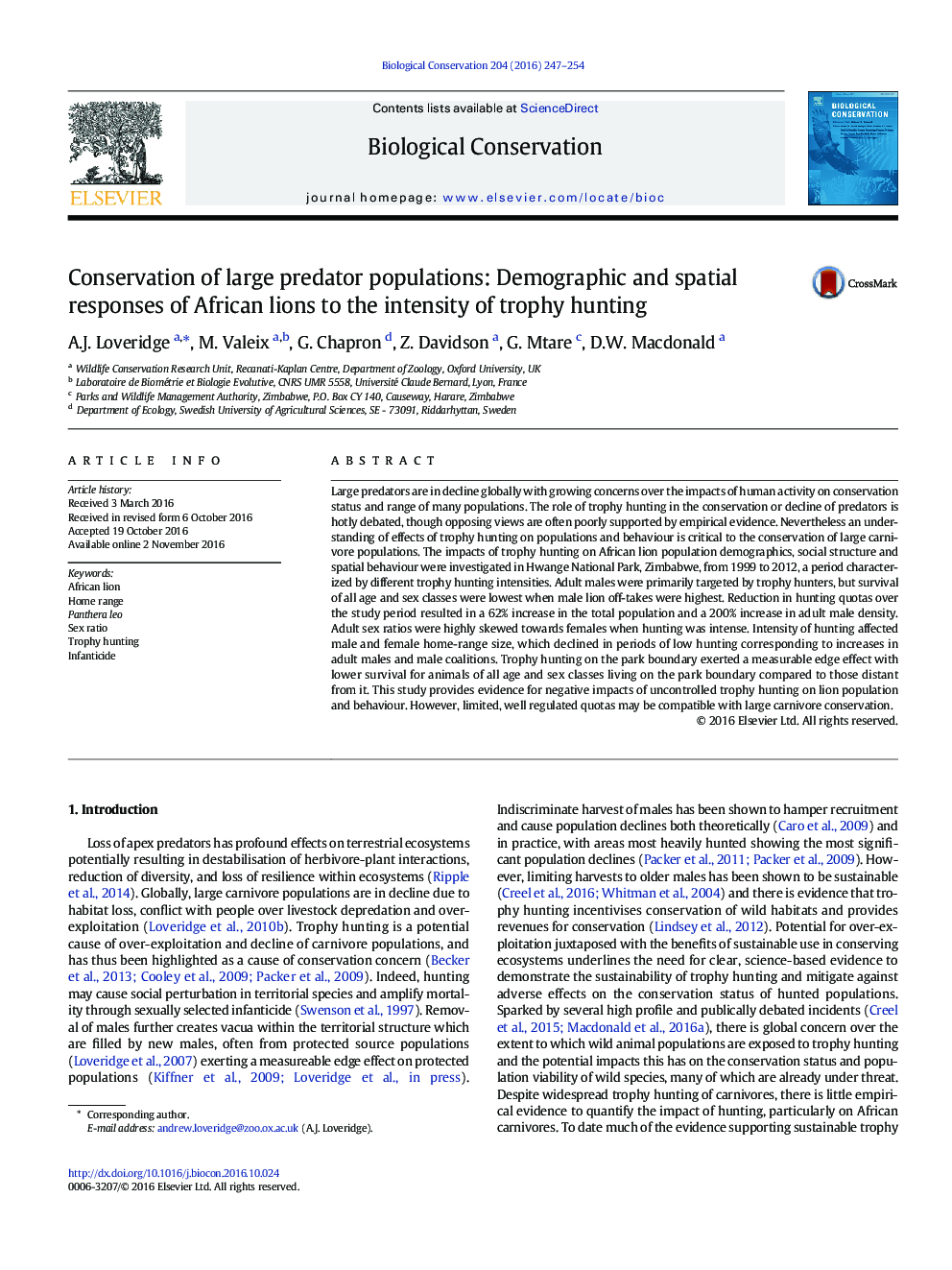| کد مقاله | کد نشریه | سال انتشار | مقاله انگلیسی | نسخه تمام متن |
|---|---|---|---|---|
| 5743400 | 1412305 | 2016 | 8 صفحه PDF | دانلود رایگان |
- Intensive trophy hunting has a measurable effect on large predator population size, demographic structure and spatial behaviour
- Intensity of trophy hunting of lions affects total population size, adult female and adult male density, sex ratio and number of male coalitions
- Survival of adult males, adult females and cubs were all affected by intensity of hunting and were highest when hunting off-takes were low.
- After introduction of limited hunting quotas the lion population increased by 62% and density of adult males and male coalitions by 200%.
- Trophy hunting impacts large predator populations. Hunting quotas need to be limited, well managed and monitored to reduce negative effects.
Large predators are in decline globally with growing concerns over the impacts of human activity on conservation status and range of many populations. The role of trophy hunting in the conservation or decline of predators is hotly debated, though opposing views are often poorly supported by empirical evidence. Nevertheless an understanding of effects of trophy hunting on populations and behaviour is critical to the conservation of large carnivore populations. The impacts of trophy hunting on African lion population demographics, social structure and spatial behaviour were investigated in Hwange National Park, Zimbabwe, from 1999 to 2012, a period characterized by different trophy hunting intensities. Adult males were primarily targeted by trophy hunters, but survival of all age and sex classes were lowest when male lion off-takes were highest. Reduction in hunting quotas over the study period resulted in a 62% increase in the total population and a 200% increase in adult male density. Adult sex ratios were highly skewed towards females when hunting was intense. Intensity of hunting affected male and female home-range size, which declined in periods of low hunting corresponding to increases in adult males and male coalitions. Trophy hunting on the park boundary exerted a measurable edge effect with lower survival for animals of all age and sex classes living on the park boundary compared to those distant from it. This study provides evidence for negative impacts of uncontrolled trophy hunting on lion population and behaviour. However, limited, well regulated quotas may be compatible with large carnivore conservation.
Journal: Biological Conservation - Volume 204, Part B, December 2016, Pages 247-254
